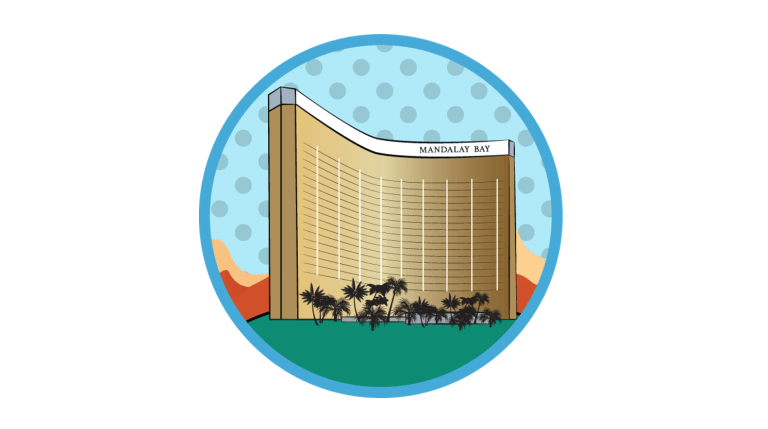As the bright lights of Groceryshop fade away, we took some time amid the whirling of the slot machines and the laughter at the craps tables to put together a quick recap of what we heard over the three plus days of the conference (recaps for Day 1 and Day 2 can be found on our blog). To make this easier, we took the perspective of a grocery retailer’s CEO to answer this question:
With everything we heard this week, what investments would you prioritize to remain competitive over the next 3-5 years given the grocery boom?
We assumed the usual initiatives – such as private label expansion and ongoing process improvements – move along as planned in answering this question. Without further ado, here’s the prioritized shopping list we put together for a grocery retailer CEO.
1. Investments in real-time inventory and supply chain enhancements: This concept was not a frequent conversation starter during the conference. However, these investments are foundational to enable digital orders from customers, enhance item forecasts, and provide better visibility to inventory shortages or stress points in the supply chain. Supply chain investments will also help grocers be more proactive during times of disruption which seem to occur more frequently amidst the many macroeconomic issues today including labor shortages, pandemic-related shutdowns, climate change, etc. Supply chain information and flexibility is essential to a grocer’s success during rapid growth to ensure a sturdy foundation to meet the customer’s needs on their terms.
2. Enhancements to in–store tools for associates: This topic was another one that was mentioned more in passing but was highlighted by Jordan Berke of Tomorrow Retail Consulting on Day 1. He mentioned that Walmart had invested a significant portion – over half – of engineering resources to improve digital technology for store associates. Investments in the enhancement of tools for in-store associates are often retailer-specific depending on pain points or existing processes. We heard from Google’s Carrie Tharp on Day 3 about using Google Glasses to scan items on shelf or count inventory to improve efficiency. We also heard about some retailers’ push to use voice – like at The Container Store – versus handheld devices for improved productivity. The bottom line is that with a tightening labor market, and growing omnichannel sales, giving associates tools to be more efficient with their time allows them to better serve customers.
3. Develop the path to improve first-party data: First-party data gathering and application was a hot topic throughout the show. The regulations around consumer privacy and the recent changes to the Apple iOS system – where most consumers are selecting “Ask App Not to Track” – limit third-party data an app can collect. Retailers can no longer easily supplement their information with third parties to get a better view of the consumer. So, it’s imperative to have a strong ecosystem – as basic as loyalty all the way to social commerce – that keeps customers engaged and provides first party data points that retailers can use to better serve customers. Even better if the ecosystem is personalized to the customer and gives them more choice, as Chris Rupp from Albertsons pointed out. Investments in customer engagement to drive first-party data enables digital media networks to flourish and will add CPG marketing dollars to activate with customers. If you build it, the dollars will come.
4. Experimentation with order fulfillment technology and automation: While this is a basic concept, it relies on heavy upfront analysis to identify the ideal solutions to test. The increasing volume of ecommerce orders – which represent a larger portion of the overall business – means it is a no brainer to test new store designs that drive more efficient order fulfillment. To enable rapid delivery, companies like GoPuff have built out a network of MFCs to meet 20-minute delivery times. For others, like Raley’s, this meant experimenting with dark stores at old lease sites to fulfill orders and diverting volume from other stores to pick from the more efficient dark store node. Some companies might find hybrid options that are denser manual picking areas in existing stores – as Jordan Berke pointed out as well. What this boils down to, though, is identifying the best solutions for the customer and testing them to enable digital order growth.

5. Identify improved experiences in-store for customers [related to #4] – the topic of new store concepts built around more efficient order fulfillment in the “back” and a better customer experience in the “front” was a common theme throughout the show. At its core, the aim to drive higher customer satisfaction when shopping in stores can start with something as basic as a sampling program or highlighting new, relevant products for customers. It also could take the form of local restaurant partnerships or expanding the prepared food sections as prepared meals blur the line with restaurant takeout. The key is just giving the customer a reason to come in and explore the store in a differentiated manner than the convenience of digital ordering.
6. Automated checkout powered by computer vision – Last, but not least, if the prior investments are not enough for any CEO to juggle, imagine a nationwide rollout of Amazon Fresh stores with automated checkout powered by computer vision? Just like Amazon changed the game in terms of customer expectations on free shipping and shipping speed, they have the potential to change customer expectations in a store. Building a plan for automated self-checkout should be on the radar of every grocery retailer as automated checkout technology is close to ready for prime time.
The Navio Group works with retailers that want to transform their business. Interested in discussing these or other insights? Shoot us a note at carlos@thenaviogroup.com




